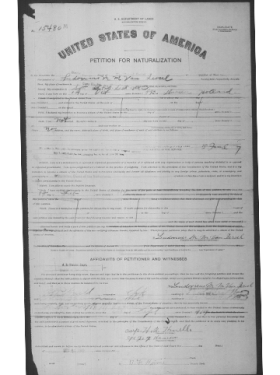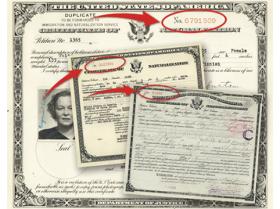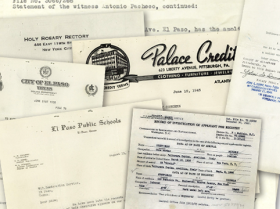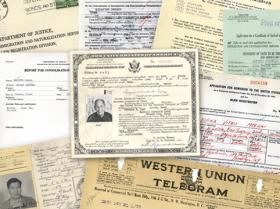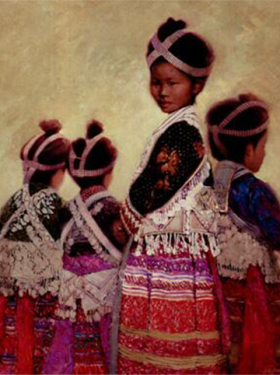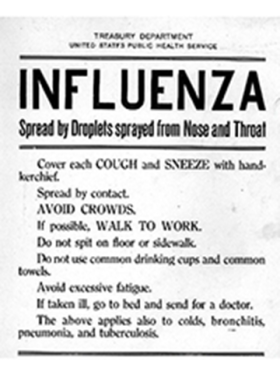Stories from the Archives
Read the stories of people and programs that make up federal immigration history, learn about the most interesting items in our library collection, or get tips on researching in agency records.
Type a topic or time period into the “Search by Content” box below or browse through the articles.
During the First World War, thousands of foreign-born citizens and immigrants joined the United States military as the nation tried to meet the massive manpower requirements of the American Expeditionary Forces (AEF). Of these immigrant combatants, 13 received the Medal of Honor for their wartime valor. One of these men, Ludovicus Matheus Van Iersel, volunteered to serve again in the Second World War. This is his story.
Certificate of Naturalization # 1 and the “First Naturalized U.S. Citizen”
Several curious researchers have asked the USCIS History Office, “Who was the first naturalized U.S. citizen?”
Unfortunately, we don’t know.
But we do know who received Certificate of Naturalization #1 and we know he is not the first naturalized U.S. citizen.
The USCIS History Library holds several photographs of the Mexican Agricultural Labor Program, commonly called the “Bracero Program,” dating from 1951-1964. The photographs provide an interesting firsthand glimpse at how INS inspected and admitted Braceros on the Mexican border.
The declaration of intention is an American invention and unique aspect of our nation's naturalization history.
Research into U.S. Citizenship and Immigration Services (USCIS) agency history is complicated by the many name changes it experienced over time.
What is the difference between a search requested from the National Archives (ordering reproductions, Immigration & Naturalization Records) and requesting information from USCIS? Does the content from these two sources overlap? Thank you for your help in understanding the difference between what is available from each agency for Naturalization records.
The vast collection of historical Immigration and Naturalization Service (INS) subject, policy and correspondence files now stored as Entry 9 of Record Group 85 at the U.S. National Archives in Washington, D.C. includes thousands of files related to all aspects of immigration policy during the years 1906-1956.
“New Year in America,” painting by Lois Johnson shows children in Hmong costumes.
Shortly after the creation of the federal Immigration Service in 1891 Congress authorized an immigration commission to investigate the workings of U.S. immigration laws.
In 1918, while World War I (WWI) raged overseas, Americans on the home front fought their own battle against an uncontrollable strain of influenza. The Spanish influenza epidemic spread quickly in the United States (U.S.) and abroad as it devastated civilian populations and military combatants. Soldiers transmitted the virus in their close living quarters and circulated it around the world as they travelled from base to base. Approximately 45,000 American service members died of influenza during WWI, nearly half of all American casualties. Eventually, the Spanish flu claimed over 650,000 lives in the U.S., just a fraction of its 20 to 50 million global victims.

